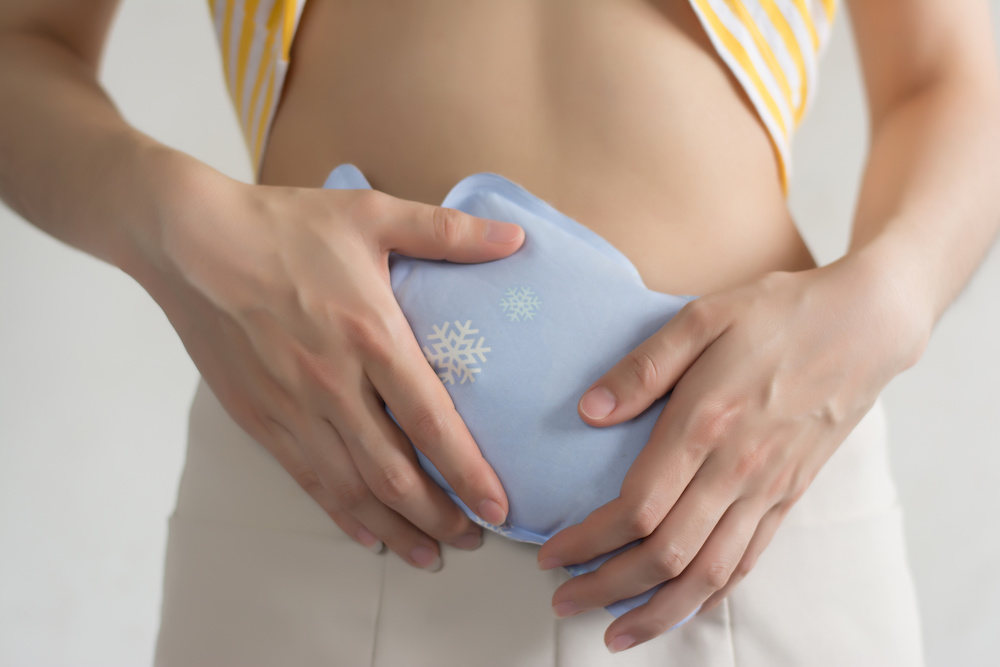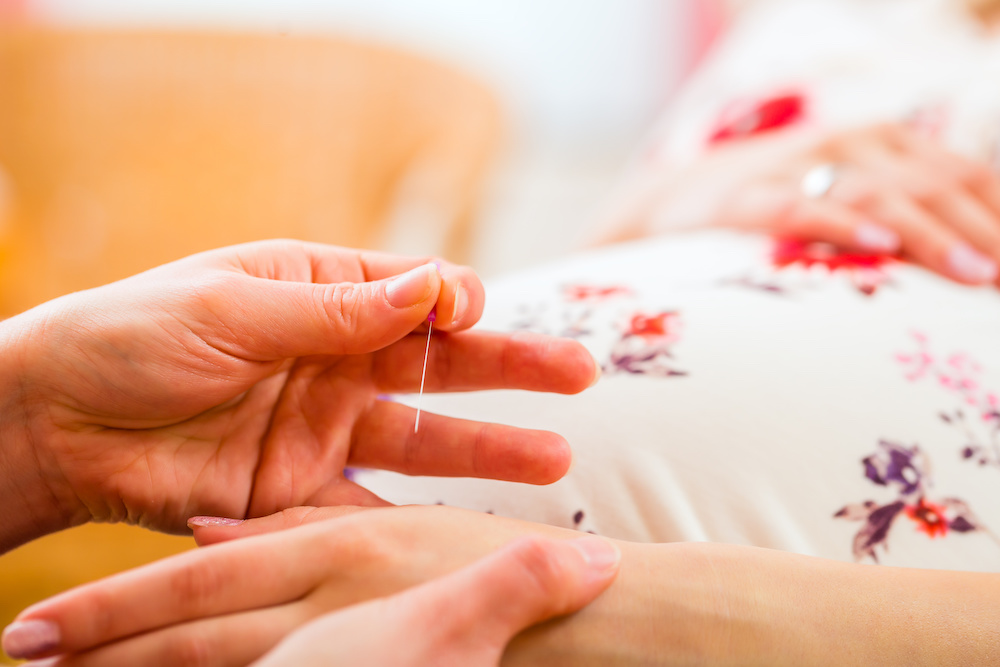With pregnancy comes bodily changes and, yes, discomfort and pain; in fact, nearly 50 percent of women experience muscle cramps during pregnancy.
In your second or third trimester, you might experience spasms in your back, leg, abdomen, feet, or hands.
Some use a heating pad to help relieve these spasms. If you’re one of them, you might wonder, Can you use a heating pad when pregnant?
The quick answer is yes, it is generally safe to use, but you should take some necessary precautions.
Keep reading to learn why you’re experiencing body pain, how heating pads work, and how to use a heating pad safely during pregnancy.

What Are the Causes of Body Pain During Pregnancy?
As mentioned, aches and twinges are common scenarios during pregnancy, but the cause of pregnancy pains varies from one person to another.
That said, generally, you may experience muscle and joint pain during pregnancy for the following reasons:
Increased Weight
Much of the extra weight is due to your growing bump, but it’s also caused by your body storing fats in preparation for breastmilk production after your baby is born.
Unfortunately, as the numbers on the scale tick upward, so is the pressure in your back and lower extremities.
Excess weight can strain your bones and joints in the back, hips, knees, and ankles, so keeping a healthy pregnancy weight is important.
Increase in Hormonal Levels
During pregnancy, your body releases hormones that help soften and loosen your joints in preparation for childbirth.
As a result, your back may not be as well-supported, which can cause recurring pain or discomfort.
Compromised Posture
During pregnancy, your body exaggerates the natural curve of your lower back, weakening the muscles around it.
It also causes your shoulders to become more rounded, leading to upper back pain.
That said, doing things like sitting or standing too long or even bending over can trigger pain, particularly in the back and hips.
Shifting Center of Gravity
During pregnancy, your center of gravity shifts forward. Your growing bump accentuates the curvature of your spine and adds stress to your spinal joints.
This change contributes to the tightening of your spinal muscles, which leads to pain or discomfort.
In addition, your growing bump adds extra pressure on your joints which means more work for your back muscles.
Aside from body pain, muscle cramps are also common during pregnancy. This involuntary muscle spasm comes on quickly and can be very painful.
Heating pads are a time-tested solution for many types of pain, including muscle or joint discomfort. They promote blood circulation and allow oxygen and nutrients to reach the joints and muscles.
This eases soreness or inflammation around the muscles, tendons, and ligaments, thereby reducing pain.
Can You Use a Heating Pad When Pregnant?
A heating pad is a good option for relieving back, abdomen, and pelvis pain.
Unlike a hot tub or sauna, applying a heating pad to specific areas of your body won’t raise your core body temperature.
In case you don’t know, raising your core body temperature to more than 102 degrees Fahrenheit could potentially lead to birth abnormalities in your baby.
That is most especially during the first trimester.
Whether you’re using an electric heating pad, heated gel, or heat wrap, a heating pad can improve blood circulation to sore muscles and tissues.
Thus, going back to the question, “Can you use a heating pad when pregnant?“, the answer is yes.
Heating pads can be a great alternative to over-the-counter pain relievers.
A heating pad can increase blood circulation, reduce or prevent muscle spasms, enhance mobility in stiff muscles, and offer temporary pain relief.
Nevertheless, while it’s fine to use a heating pad to treat pregnancy-related aches and pains, you should follow a few guidelines to ensure your baby’s safety.
How to Safely Use a Heating Pad When Pregnant
If you choose to use a heating pad to find relief from body aches and pain, you should take note of the proper precautions, including:
Keep the Heat at Bay
First and most importantly, ensure the heating pad isn’t too hot. Specifically, the pad’s temperature should not go above 100 degrees Fahrenheit.
To be extra safe, consider putting a towel between you and your belly to lessen the heat and prevent your skin from burning.
If your heating pad has temperature settings, use the lowest setting possible that still makes you feel better.
Also, limit the use of heating pads during the early weeks of your pregnancy or the first trimester, as this may be the riskiest time to raise your body temperature.
Lastly, avoid using a heating pad with other heat-generating devices like a hair dryer since it makes it difficult for your body to control the heat and cool down.
Keep It Short
Don’t use a heating pad for more than 20 minutes. The ideal duration of heat therapy for localized areas like your lower back, legs, and feet is 10 to 15 minutes.
It also follows that you shouldn’t sleep with your heating pad on.
If possible, choose an electric heating pad that is set to turn off after 20 minutes in case you tend to fall asleep often, which is very common during pregnancy.
Don’t Apply Heat on Your Abdomen
You must also avoid placing the heating pad directly on your abdomen. Try placing it on your hips or lower back instead, especially if your heating pad has a strap.
If you’re experiencing abdominal pain, it’s best to consult your doctor to ensure all is well. Many factors cause abdominal pain during pregnancy, including contractions, constipation, gas and bloating, and round ligament pain.
Excessive or sudden sharp and excessive abdominal pains may also indicate a more serious problem, such as a placenta abruption or pending miscarriage.
If you’re experiencing any type of pain in your abdomen, you can use a warm water bottle against your abdomen to relieve the cramps.
Again, just make sure not to get the water in the bottle too hot.
The rule of thumb is if it’s too hot to give to a baby, then it’s also too hot for you to use. Thus, stick to warm water only.
You can cover the bottle with a towel or cloth before you place it on your abdomen.
You can safely use a heating pad on other areas of your body, such as your neck, upper back, calves, hips, shoulders, and feet.

Are There Other Ways to Relieve Pregnancy-Related Pain?
While using heating pads is generally considered safe during pregnancy, you may still be looking for other options to relieve your achy joints and sore muscles.
That said, here are some tried-and-tested recommendations:
Exercise
Routine exercise may not only help prepare your muscles for childbirth, but it can also reduce or prevent back and pelvic pain.
Experts recommend 30 minutes or more of moderate exercise per day, but be sure to check in with your doctor to find the best workout plan for you, especially if you have a complicated pregnancy or a medical condition.
Exercises that are great for every trimester include walking, cycling on a stationary bike, swimming, and low-impact activities like yoga or dancing.
Massage
One of the most beneficial times for a massage is during pregnancy. Aside from decreasing back and leg pain, a good pregnancy massage can help lower anxiety, improve sleep, and reduce stress hormones in your body.
Since the safety of massage during the first trimester hasn’t been studied well, it’s best to avoid it during this period.
Also, make sure to choose a massage therapist trained to work with pregnant women.
Acupuncture
Acupuncture is another safe method of easing lower back and pelvic pain during pregnancy.
This therapy can also help address insomnia, headache, swelling (edema), stress and anxiety, labor pain, and other pregnancy issues.
In a 2021 study, it was found that acupuncture can ease different pregnancy aches, pain, and even emotional discomfort.
Heating Pads for Pregnancy
Heating pads are handy for relieving muscle and joint pains during pregnancy. They work by improving blood circulation in target areas and reducing muscle stiffness.
However, even though they are deemed generally safe for the baby, pregnant women should take proper precautions when using heating pads.
To sum up, no matter where you use the heating pad, keep it on for less than 20 minutes and remember to use the lowest possible heat setting.
Moreover, if you want to effectively manage pain during pregnancy, consider other baby-safe alternatives like regular exercise, massage, and acupuncture.
Have a safe and healthy pregnancy!